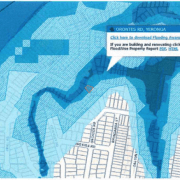One of the most important activities you will undertake while owning and operating a commercial retail property is renewing the lease upon expiry. The key is to be prepared and to be ready to act early, preventing an extended vacancy if the tenant chooses to leave the shop.
One thing I have found is that sending a request to the tenant three months prior to the lease expiration is simply not long enough in the event they decide not to renew. Yet this notice period is a common clause in many leases. When a tenant does inform you they will not be renewing their lease 3 months prior to expiry, you are suddenly on an accelerated timeline to find another tenant and avoid the loss of rent.
You will first need to select and appoint a letting agent, work with them to design and post an ad online, select and interview a prospective tenant, organise lease disclosure documents and a new lease and then allow time for the tenant’s lawyer to review and execute it. As you can see this is a lot in just three months, my experience is sourcing a new tenant takes up to 6 months. As a landlord every week the shop is empty means loosing precious rent. The other critical factor when changing tenants is the expected rent-free period for the incoming tenant to undertake their shop fitout works.
My recommendation, you need to confirm your expiring leases early, at least 6 months prior to their expiry. A standard clause I insert in all my leases is that the tenant must notify me of their intention to re-let the shop 6 months prior to expiry. In doing so you have time to avoid potential rent loss from vacancies.
The flip-side to a tenant departure is a lease renewal. If the tenant exercises an option within their lease to extend it may specify the allowable rental increase. However, in most cases when exercising options and lease expiries the landlord will be allowed to “market adjust” the rent. It is essential that you are equally prepared for this discussion.
A prudent practice when approaching a lease renewal is gaining an understanding of the rental market and typical floor space rates being achieved in that area. The best way to do this is to call 2-3 local real estate agents and ask them what properties they have recently let and what rents were achieved. I have always found these agents to be helpful and responsive, because in the event your tenant doesn’t renew their lease, you will be approaching them to find you a new tenant. So it is in their interest to assist you.
Another idea to assess the market rents is to study the online websites and local paper to see what’s on the market for lease. After doing your research you will have built a reasonable knowledge of what rent your shop should secure. You need to document the proposed rent increase citing your sources as evidence. Once the tenant receives your rent proposal for the forthcoming lease term, be prepared for some objections, some tenants will to tell you:
- “Business is slow”
- “The internet and online shopping has reduced their turnover”
- “The centre is not as busy as it used to be”
- “I’m just not making the same margins I used to”
- “There’s an opportunity to move up the road on half the rent”
- “My staff costs and expenses have gone up, it’s not worth my while if you put the rent up”
It is the tenant’s objective to convince you they are going broke and are about to shut their doors, just so you don’t put the rent up. They will probably argue that the rent should be reduced. I hear this often and it is expected behaviour for a shop keeper to want to keep more of the profit for themselves. Your mission is to ensure the rent your shop is deriving remains current with what the wider market is returning.
My approach for the rent increase discussions is to start by letting the tenant know that they are coming off a 2, 3 or 5 year lease so the market has moved since they negotiated the previous lease. Market rents have climbed faster than CPI or the fixed increases built into their lease. I inform them that this renewal will be a market adjustment where we need to ensure the rent has kept pace with the increasing costs of council rates, water rates, insurances, bank interest and labour cost for cleaning, gardening and management.
The tenant will not like it, but your preparation and documented evidence of rental floor space rates of similar shops in the area is a huge pacifier to get the tenant to accept the increase. I generally find market adjustment increases of 4 – 5% are readily accepted by the tenant.
In the occasional situations where you find rents have increased significantly and equate to increases of 10 – 15%, these situations can lead to difficult conversations and hence require more preparation. It is always a negotiation and whilst you can hold your ground and demand the increase the tenant can also look elsewhere and exit leaving you a vacant shop. It is always a good idea to be fair and look for compromise in these situations. For example, to moderate the impact you may consider not passing this large increase upfront, instead staggering the increase as 5-7% for each of the next two years.
This situation often occurs when I offer tenants a low rent deal to fill a vacancy or secure their specific business type in my centre. In these situations, I inform the incoming tenant they are below market and attempt to apply a 4% annual increase in their lease. However, at the end of lease there are still situations where their rent is lagging the market.
In considering alternate, palatable options for a tenant’s rental increase the other variable you have in the lease is to increase the renewal term. In short, a longer lease effectively fixes the rent and annual increases for a longer period. If the tenant is coming off a 3 year lease they will have a good knowledge of their businesses performance and developed a level of comfort around their turnover. Deciding to sign a 5 year lease with 4 or 5% annual increases minimises the impact of a large rental correction and protects them from another market adjustment for 5 years. I have typically found that tenants who lock their rents in for 5, 7 or even 10 year terms enjoy cheaper than market rent in the later years of the lease.
In summary, the key points when approaching a lease expiry are:
- Get to it early, 6 months before expiry
- Put it in your lease that the tenant must exercise their option 6 months prior to expiry
- Secure an agent and advertise straight away if the current tenant is undecided at the 6 month mark
- Do your research on market rents in the local area
- Review your expenses and be ready to let the tenant know which ones have increased and by how much
- Use it as an opportunity to apply a 5% annual rent increase
- Use it as an opportunity to extend the lease term.







